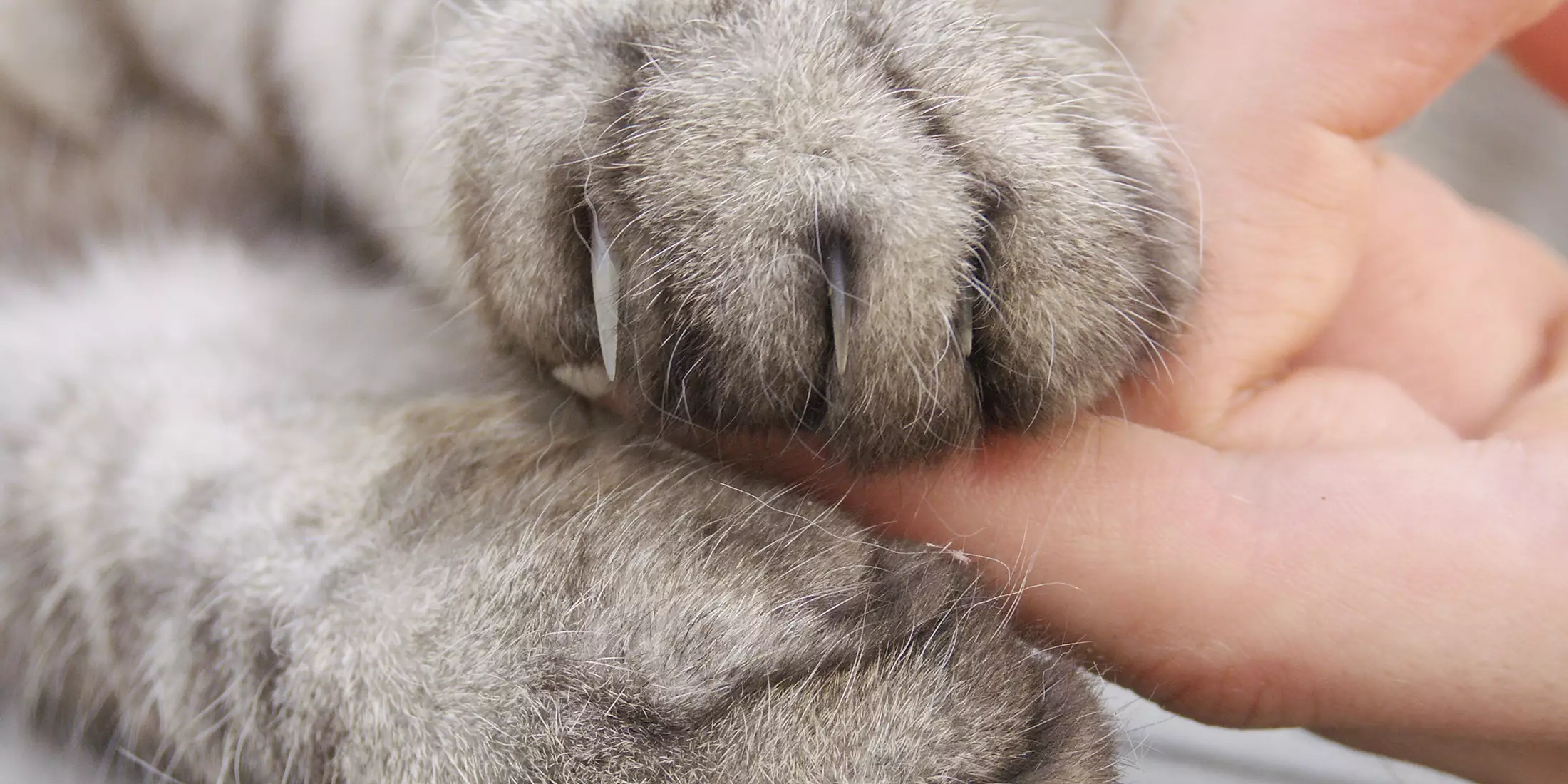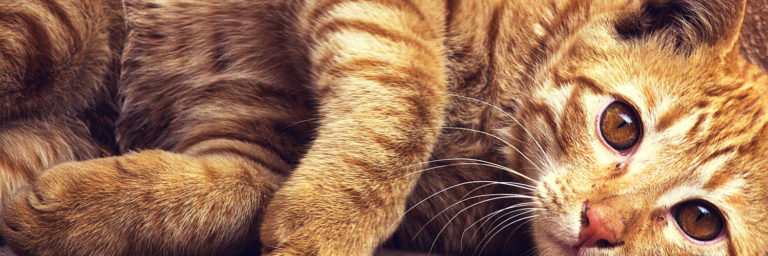Leukemia Virus Infection in Cats: Symptoms and Treatments of Leukemia
Contents of Article
- What is Leukemia Virus Infection in Cats
- How Does Feline Leukemia Virus Infection Spread
- Stages of Leukemia Virus Infection in Cats
- Effects of Feline Leukemia Virus Infection in Cats
- Symptoms of Leukemia Virus Infection in Cats
- Diagnosis of Feline Leukemia Virus Infection
- Treatment for Leukemia Virus Infection
One of the leading causes of death in cats, feline leukemia virus (FeLV) is a disease that affects the cat’s immune system. As a result, the compromised immune system is unable to protect the feline’s body from fatal viruses and infections. Not only this, the virus infection can lead to the development of tumors, which are responsible for a majority of cat deaths. The leukemia virus infection in cats affects all breeds, though males are at a greater risk of infection than females. The infection affects cats aged between 1 and 6 years old.
What is Leukemia Virus Infection in Cats
FeLV is caused by a group of viruses belonging to the retrovirus family that can cause tumors in the body of the affected kitty, including leukemia and lymphoma. Oncornavirus, as the group of viruses is known, causes certain tumors and cancers in the affected cats. This type of infection may also result in severe complications, such as anemia and immunosuppression. Unfortunately, more cats die of these complications than from tumors.
How Does Feline Leukemia Virus Infection Spread
A cat with frequent episodes of FeLV infection is at a high risk of developing a clinical disease related to the virus. Not only this, the affected cat can shed large quantities of virus in the saliva, urine, nasal secretions, feces, and milk. However, the virus cannot survive in an outside environment for a long period of time. Leukemia virus survives only for a few hours under normal conditions outside the cat’s body.
An infected kitty may spread the leukemia virus infection through prolonged social contact. This may include shared or common feeding dishes or litter trays and mutual grooming, where there is a high risk of the ingestion of virus by another cat.
Cats that are allowed to go outdoors unsupervised may catch an infection from a biting wound or attack by an infected cat. Also, cats living with infected cats may catch FeLV infection quickly.
Kittens born to a mother infected with FeLV are likely to suffer from infestation at the time of birth. Some kittens get the infection when they are nursing. A majority of such kittens die before the birth or are aborted.
Kittens are more vulnerable to FeLV infection than adult cats. But this does not mean that healthy adult cats cannot become infected with the virus. They, too, can catch the infection if comprehensively exposed. Sick, outdoor cats also are at a higher risk of infection.
Stages of Leukemia Virus Infection in Cats
- Abortive infection – Rarely, a cat’s body can send an effective immune response against the FeLV and get rid of it completely. Such cats become completely immune to the virus, but this is relatively uncommon.
- Regressive Infection – When the virus infests in a cat, his body mounts an immune response. The response can eliminate the infection from the bloodstream. Unfortunately, it is not adequate to eliminate the FeLV DNA from the bone marrow. Such cats with regressive infection are not a threat for other felines until the virus is reactivated in the future.
- Progressive infection – FeLV virus particles spread in the bloodstreams of the cats infected with progressive infection. This poses a high risk of infection for other cats. A cat with a progressive FeLV infestation begins to show clinical signs of the infection.
Effects of Feline Leukemia Virus Infection in Cats
- Anemia–Anemia resulting from FeLV infection accounts for 25% of leukemia cases. This includes viral suppression of the red blood cell precursors.
- Immunosuppression–In a majority of cats infected with the virus, suppression of normal immune response is common. The infection results in the development of secondary diseases and clinical infections.
- Neoplasia–It is the abnormal growth of tissue in a FeLV-infected cat. Cats with progressive FeLV infection are highly vulnerable to developing lymphoma. The infection has the potential to damage the DNA of infected cells, resulting in the development of tumors.
Symptoms of Leukemia Virus Infection in Cats
During the early stages of infection, your kitty may not exhibit any signs of disease. However, the health of an infected cat may progressively deteriorate with repeated cycles of illness. Some of the most common signs of FeLV include:
- Poor coat health
- Loss of appetite
- Persistent fever
- Progressive weight loss
- Enlarged lymph nodes
- Infection of the urinary bladder
- Inflammation of gums
- Mouth infection and swelling
- Skin infections
- Pale gums
- Upper respiratory tract infection
- Persistent diarrhea
- Eye disease
- Weight loss
- Seizures
- Neurological disorders
- Reproductive problems, including sterility in unspayed cats
- Poor healing of wounds
Diagnosis of Feline Leukemia Virus Infection
The veterinarian may perform two types of blood tests to diagnose FeLV. These tests help detect a protein component of the virus.
- Enzyme-linked immunosorbent assay or ELISA is a screening test performed to detect the presence of free virus particles in the cat’s bloodstream.
- Indirect immunofluorescent antibody assay or IFA test is done after the ELISA test reports are positive. The IFA test confirms FeLV infection and determines the progression of the disease. In the case of an advanced infection, the test confirms the presence of virus in the cat’s white blood cells.
- In rare cases, the vet may recommend using a polymerase chain reaction (PCR) test to detect the virus DNA and determine if the leukemia virus infection in cats has spread to the bone marrow.
Treatment for Leukemia Virus Infection
The best way to protect your feline friend from the leukemia virus infection is to prevent his exposure to infected cats. Allow outdoor access to your kitty only under your supervision while preventing him from wandering or fighting with wild cats.
- Never share food and water bowls as well as litter boxes between FeLV-infected cats and healthy felines. If any of your cats has FeLV infection, separate the infected kitty from the non-infected cats to eliminate the risk of FeLV transmission.
- Prompt diagnosis and treatment can help improve the quality of life of an infected kitty.
- Blood transfusion may help manage anemia in the infected cats.
- Good quality nutritional support is essential to nourish the body of an infected cat. Avoid feeding raw foods to your kitty, as that may carry a health risk.
- Chemotherapy may be used in the case of FeLV-associated lymphomas.
- FeLV vaccination may provide protection against FeLV infection. Subsequent vaccinations will depend on the risk of exposure. For example, a single housed indoor kitty is at the least risk of exposure to FeLV. However, the case may be different for an indoor-outdoor cat. Similarly, cats in multi-cat households face a high risk of infection. An infected kitty can transmit the virus to other cats in the house, so extra caution is required in such cases.
Feline leukemia virus affects cats alone and does not transmit to humans or other animals.







